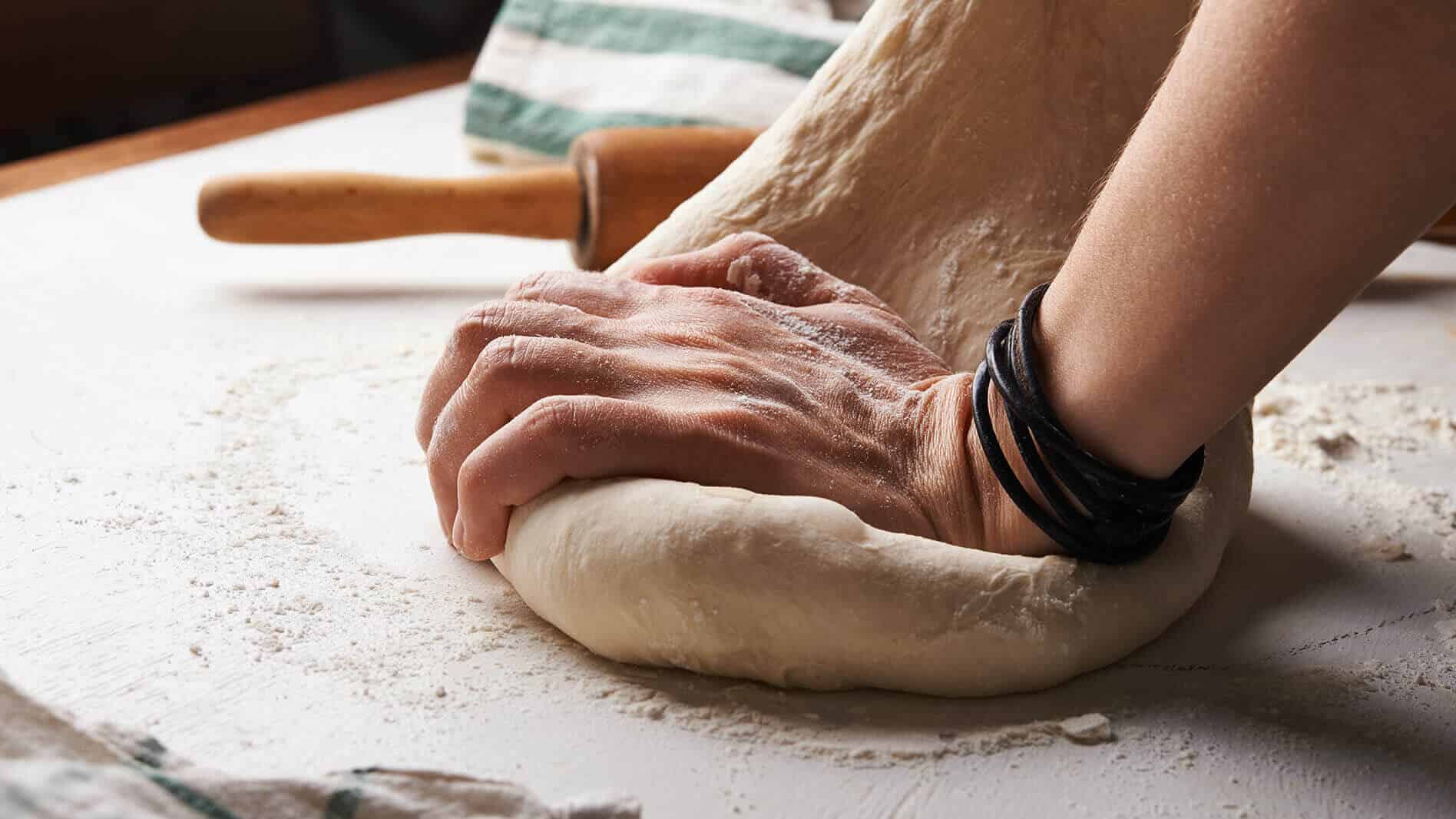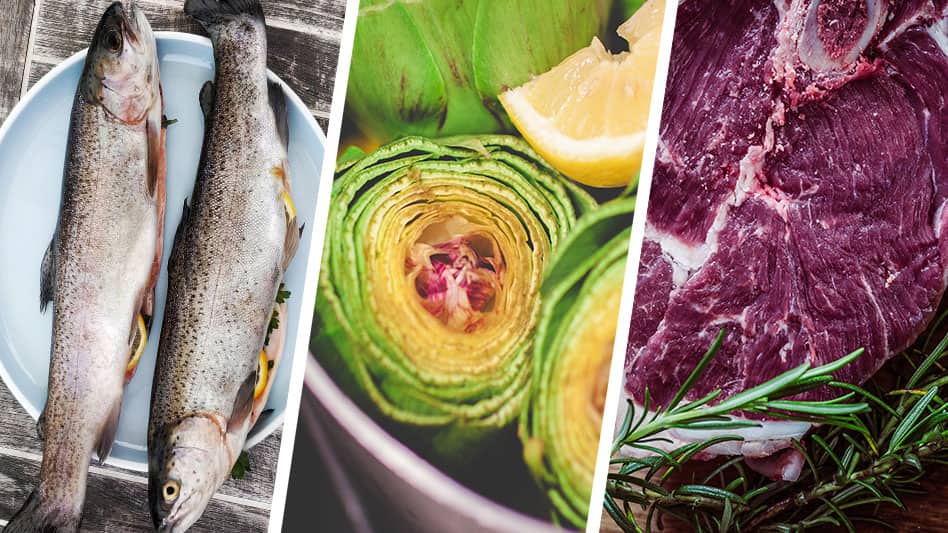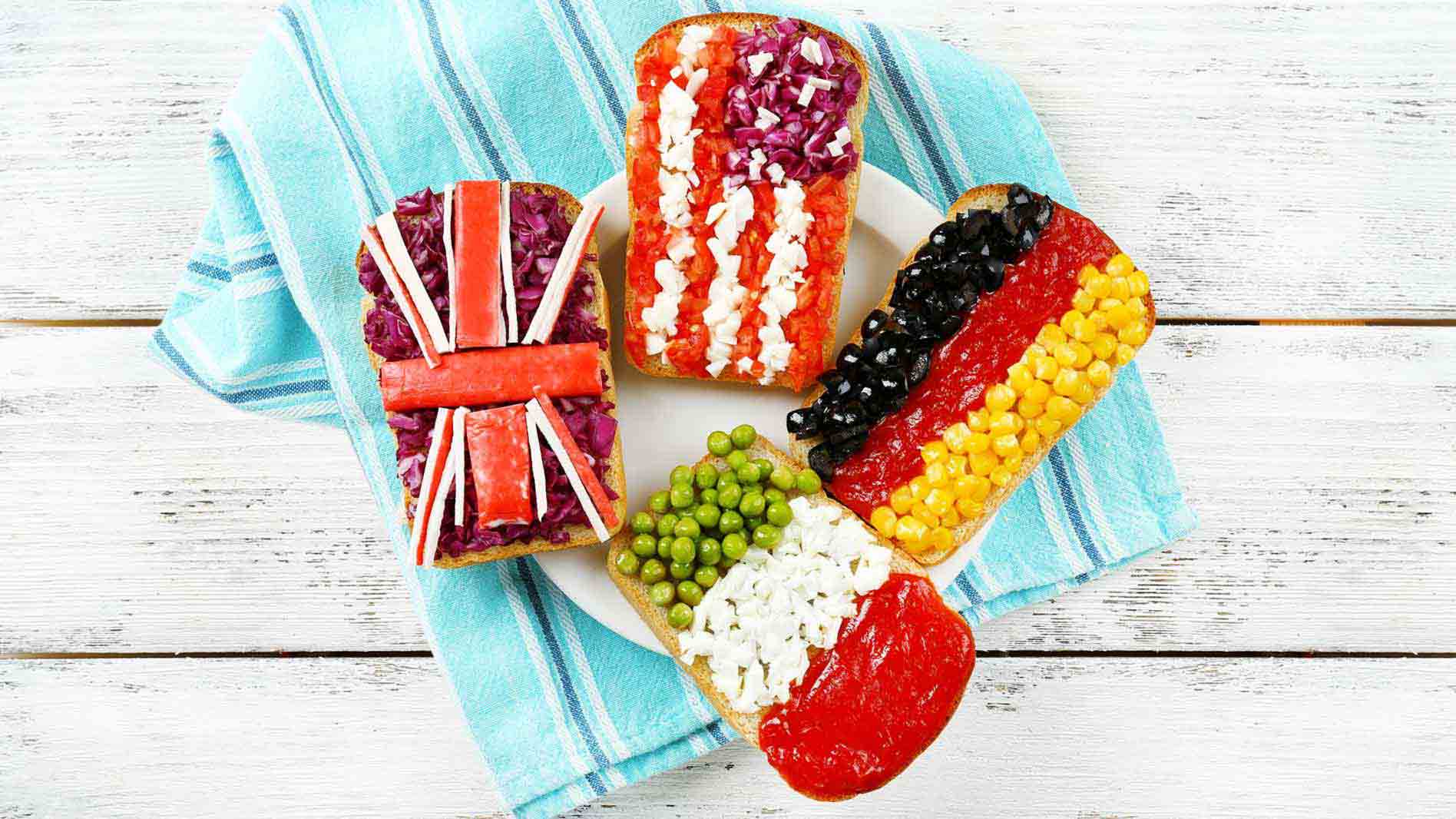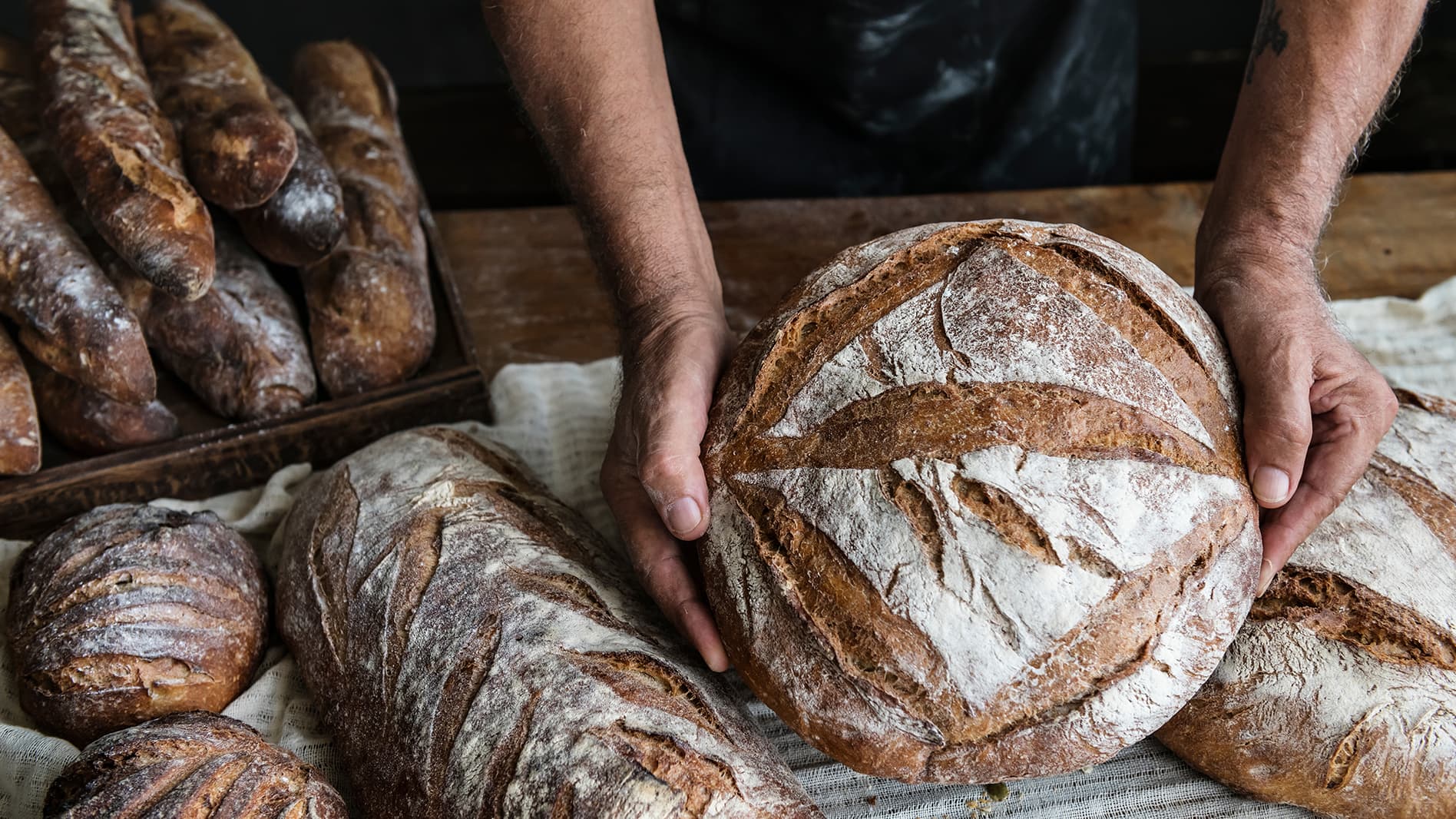
Want to get more out of your regular fresh bread order? We uncover five ways you can use fresh bread in your kitchen, away from the standard sandwich offering.
It’s a product that is found in every kitchen across Australia. It comes in a range of different shapes, sizes and colours and is super soft on the inside but crisp around the edges. When placed on a table, arms cross one another and hands grab hold tightly. With every bite, memories flood back and tastebuds dance wild.
Bread, it truly is a powerful offering for every menu. Though, while it is easy to link artisan bread to sandwiches, both gourmet or the simplest offering, or as a side component to a meal; the uses of the baked good go well beyond. From breakfast, lunch, dessert and everything in between, bread can be the product that helps lift your dish and take it to new levels.
It can be used to thicken sauces, as a binding agent for ground meats, breadcrumbs and the list goes on. No matter how you use bread in the kitchen, the tastes are desirable. To help you get the most out of your next bread order, we’ve discovered five flavoursome ways you can use it in your kitchen, outside of your sandwich bar.
1. Bread pudding:
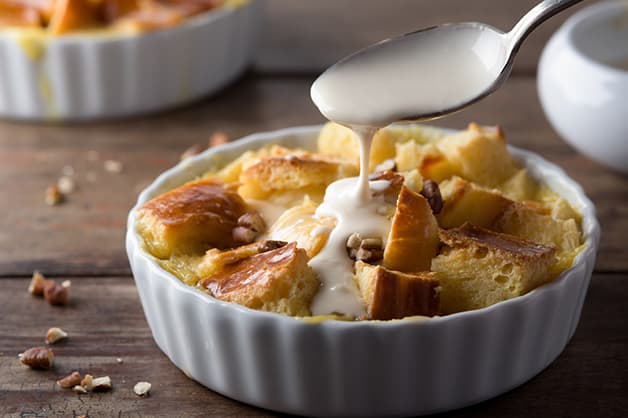
It’s known as being a velvety, custardy dessert, but the trusted bread pudding is now beginning to pop up on main course menus as a savoury offering. Yep, you read that right, bread pudding can be both savoury and sweet. To create the spin-off of the bread pudding, chefs have been switching the sweet ingredients for bold veggies and proteins. Savoury bread puddings can include ham and cheddar, cheese and pickles or cheese and tomatoes. Kale, mushroom and leek bread pudding with the combination of parmesan and gruyere cheese are also making a presence as a great brunch offering. Though when it comes to the classic sweet offering, the dish is known for its creamy custard and fresh fruits. To ensure even those gluten avoiders can enjoy the dish, Chef Adam has also turned it into a gluten free delight, with the use of rum soaked raisins, apple and maple syrup. To ensure the thick creaminess still exists, he uses heavy cream, eggs and butter. For the dessert, all kinds of breads can be used as the creamy sauce soaks into any texture.
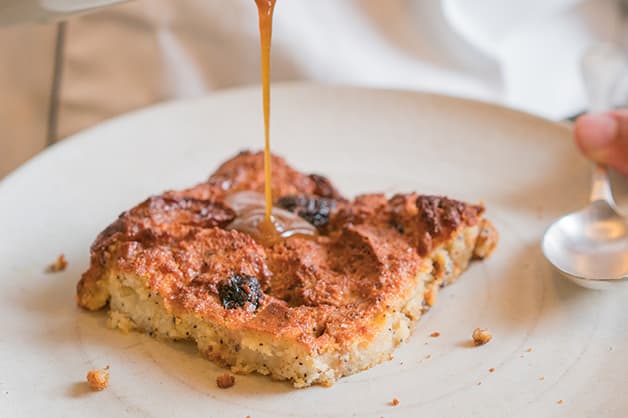
2. French toast:

They’re perfect for breakfast menus, and some may even say dessert thanks to the sweet, punchy flavours. It’s no surprise that guests can never go past French toast. French toast is the perfect recipe for fresh or left over bread. Soaking the bread in eggs, brown sugar and cinnamon delivers the creamy, tasty breakfast that customers desire (especially on a cool morning). It’s commonly finished off with chocolate and banana or can be taken to the next level with Chef Vas’ apple crumble fresh toast with vanilla mascarpone version. For a twist on the traditional dish, kaya filled French toast is the way to go. Kaya is a spread containing coconut and sugar that catches the attention of customers thanks to its bright green colouring. Topped with berries and kiwi fruit, it is an adaptation you can’t go past.
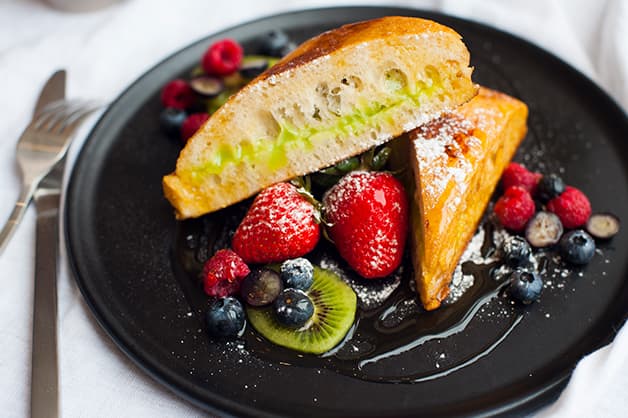
3. Panzanella:

Panzanella is a much-loved Italian bread salad that is also referred to as panmolle. It’s the perfect summer offering and is a great alternative way to using bread on your menu. This traditional Tuscan salad consists of soaked toasted (or stale) bread, onions and tomatoes – simple, quick to create and fresh. Some chefs may even add cucumbers and basil to mix the sharp, mellow flavours or go for fried cauliflower and crisp radishes for a crunch component. For the best flavouring, allow the bread to sit for 30 minutes with all the ingredient before serving.
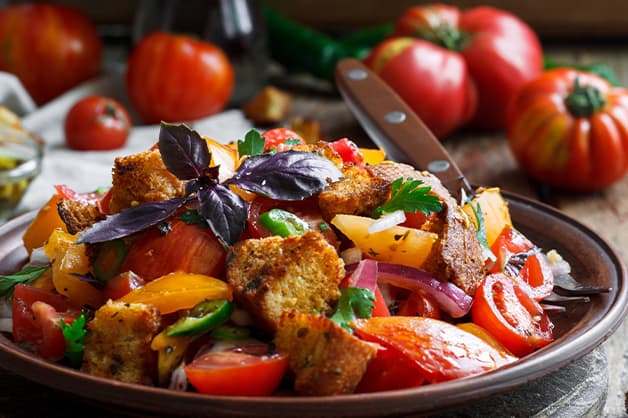
4. Breadcrumbs:
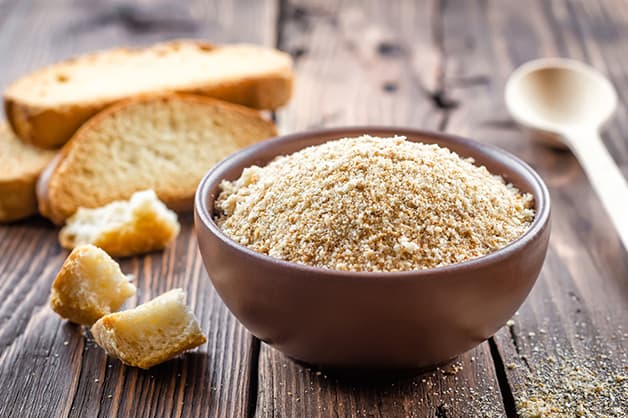
Breadcrumbs are used in many ways within the kitchen, They work great as a binder for dishes like meat loaf, meatballs, crab cakes and more. They are also a tasty crust option for chicken, veal and fish. Or better yet, sprinkle breadcrumbs over baked dishes, such as mac and cheese, to create a crispy, golden topping. So, while it is common to buy breadcrumbs in bulk, making your own can also be just as beneficial. The best thing about making your own is that you can either use fresh bread from your latest delivery or stale bread to avoid wastage. And when it comes to making it, it’s simple and quick. Either dry out the bread or toast it, then blend each piece until they form a fine crumb. To ensure you get the longest life expectancy from the product, store the breadcrumbs in an airtight container. If you keep them in a room temperature storeroom, you can expect to receive one to two weeks from the goods. Though if you are wanting to extend its usage, keep the good in the freezer, making it accessible for several months.
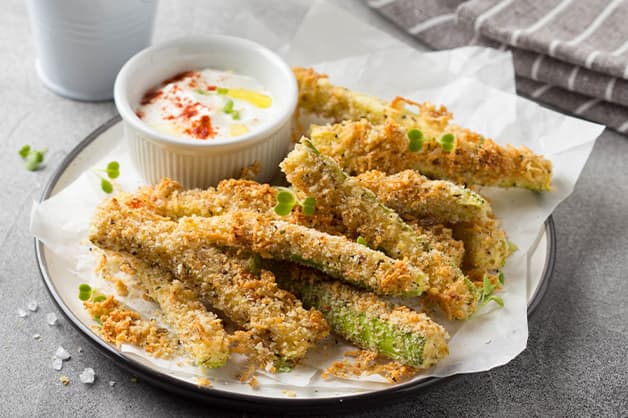
5. Croutons:
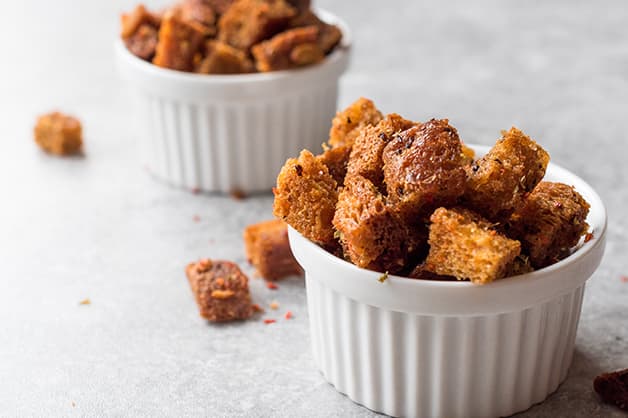
They add a perfect crunch element to salads and a light, fluffy component to soups, and are regularly used across café and restaurant menus. So, why spend the money on buying croutons when you can make them yourself using bread that is already in your storeroom? While dense bread will work better than soft, both can still be utilised to make croutons. Cut them into cubes and bake until they form a crunchy texture. For some flavouring, coat the bread in olive oil, salt, pepper and spices. But if you are after that hit of punchy flavour, sprinkle the bread with parmesan cheese before baking. You can also provide your customers with a tasty crouton by experimenting with different spices and coatings. But remember to always be cautious of the flavour elements the overall dish delivers, you don’t want to create overpowering croutons.
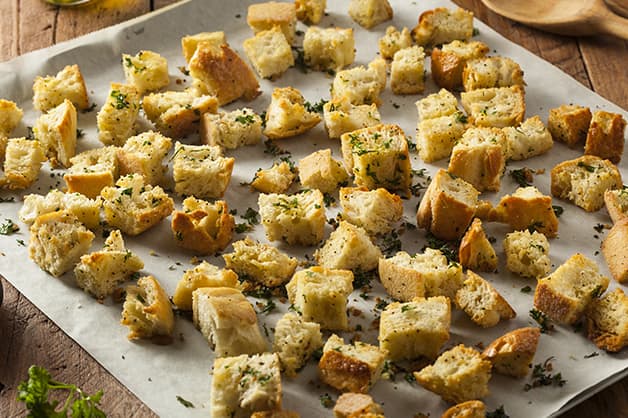
Goodman Fielder Food Service supply premium, fresh, wholesale bread to Australian cafes, aged care facilities and hospitality venues.
